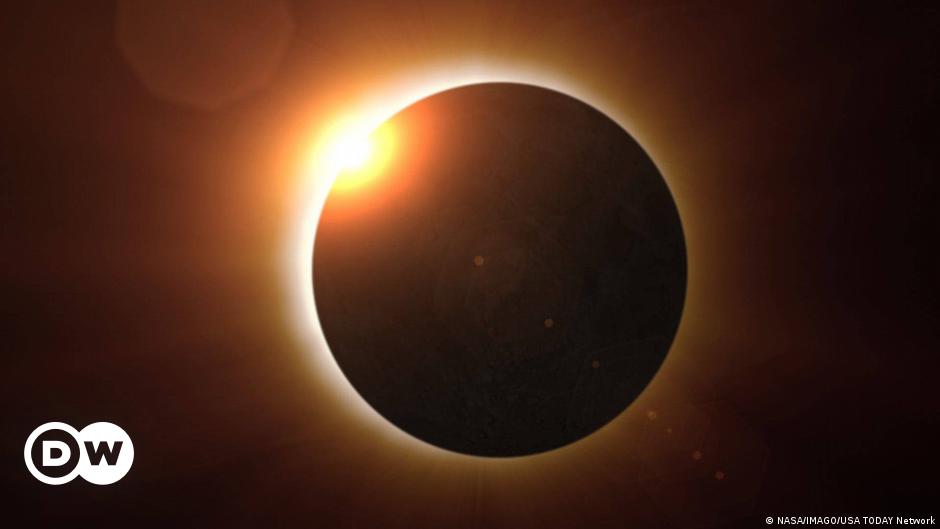Next Monday, April 8, A spectacular total solar eclipse It will darken the skies of North America, crossing the US from the coast of Mexico to Canada. This celestial event, when the Moon comes between the Earth and the Sun, promises to be a sight like no other.
The eclipse will begin over the vast South Pacific, and is expected to make landfall on Mexico's Pacific coast around 11:07 a.m. (Pacific Time) before entering the United States through Texas. From there, the moon's shadow will cross states like Oklahoma, Arkansas, and Missouri, leave Tennessee, continue through Illinois, Kentucky, and more, until it says goodbye to the Atlantic coast of Newfoundland, Canada, at 5:16 p.m. Lucky people in 48 US states will be able to experience at least a partial eclipse.
Best Places to View the Eclipse
Some major cities and their metropolitan areas are on or near the total route. Some of them are: Mazatlan and Dorian in Mexico; San Antonio, Austin, Waco, Fort Worth and Dallas in Texas; Little Rock in Arkansas; St. Louis in Missouri; Louisville in Kentucky; Indianapolis in Indiana; Dayton, Columbus, Toledo and Cleveland in Ohio; Detroit in Michigan; Erie in Pennsylvania; Buffalo, Rochester and Syracuse in New York; and Hamilton, Toronto and Montreal in Canada.
Will there be clear skies on Monday?
Expectations for this Monday's total solar eclipse are really clouded by weather uncertainty. Because of storms in the Central United States, forecasts call for cloud cover for much of the eclipse path, which stretches from Mexico and Texas to Maine and Canada. The northeastern parts of the country and parts of Arkansas, Missouri and Illinois may experience clear skies. , other regions such as Ohio, Pennsylvania, New York, Texas and Mexico face more uncertain forecasts. Experts insist it's too early to be sure, and updates will be provided until the day of the event.
Watch the total solar eclipse online
Eclipse watchers (and non-watchers) can still watch the total solar eclipse online. NASA will broadcast Views of the Sun From telescopes And inside NASATV Starts at 1 pm EDT. Associated Press journalists too They hide live Eclipse from the other side of the path, 10 a.m. EDT, views from Mazatlán (Mexico) and elsewhere. Museum laboratory, Time and date And Slooh will also broadcast footage of the eclipse day.
The sun is completely eclipsed
This eclipse is distinguished not only by its path, but also by its amplitude. It will be wider than the 2017 eclipse, covering a path between 108 and 122 miles, meaning it will cover more land and be visible to more people. During the eclipse, viewers can experience many spectacular phases, from the appearance of Bailey beads to a stunning diamond ring.
Unlike annual solar eclipses where the Moon leaves a visible “ring of fire” without completely covering the Sun, this total solar eclipse promises to completely cover the Sun for a short period of time. The size and distance between the Earth, the Moon, and the Sun, despite their size differences, align in such a way that the Moon completely covers the Sun, providing a unique view.
Future eclipses
According to NASA, there will be more eclipses in different parts of the world in the coming months and years.
A partial eclipse will be visible in South America, Antarctica, the Pacific Ocean, the Atlantic Ocean and North America on October 2 this year, and there will be an annular solar eclipse.
On March 29, 2025, a partial solar eclipse will occur over Europe, Asia, Africa, North America, South America, the Atlantic Ocean, and the Arctic Ocean.
On September 21, 2025, a partial solar eclipse will occur over Australia, Antarctica, the Pacific Ocean, and the Atlantic Ocean.
The annual solar eclipse visible in Antarctica will occur on February 17, 2026, with a partial eclipse visible over Antarctica, Africa, South America, the Pacific Ocean, the Atlantic Ocean, and the Indian Ocean.
The next total solar eclipse will be visible in Greenland, Iceland, Spain, Russia and a small part of Portugal on August 12, 2026, while a partial eclipse will be visible in parts of Europe, Africa, North America, the Atlantic Ocean, the Arctic Ocean and more. Pacific Ocean.
Some (Reuters, AP)



:max_bytes(150000):strip_icc()/WilliamLevy-9d1412ad3c01443498e58ed956f6242c.jpg)

